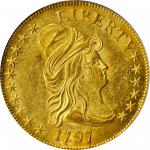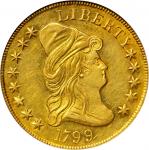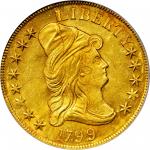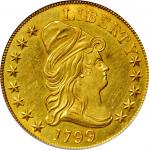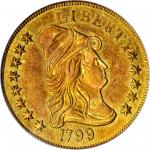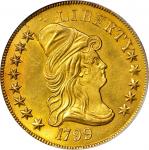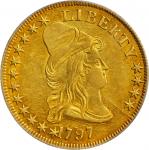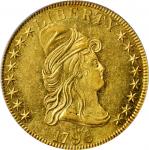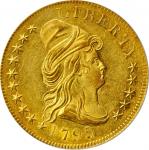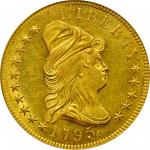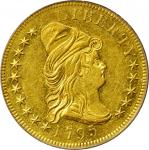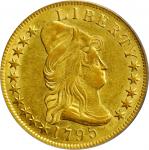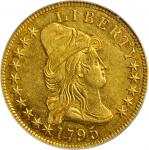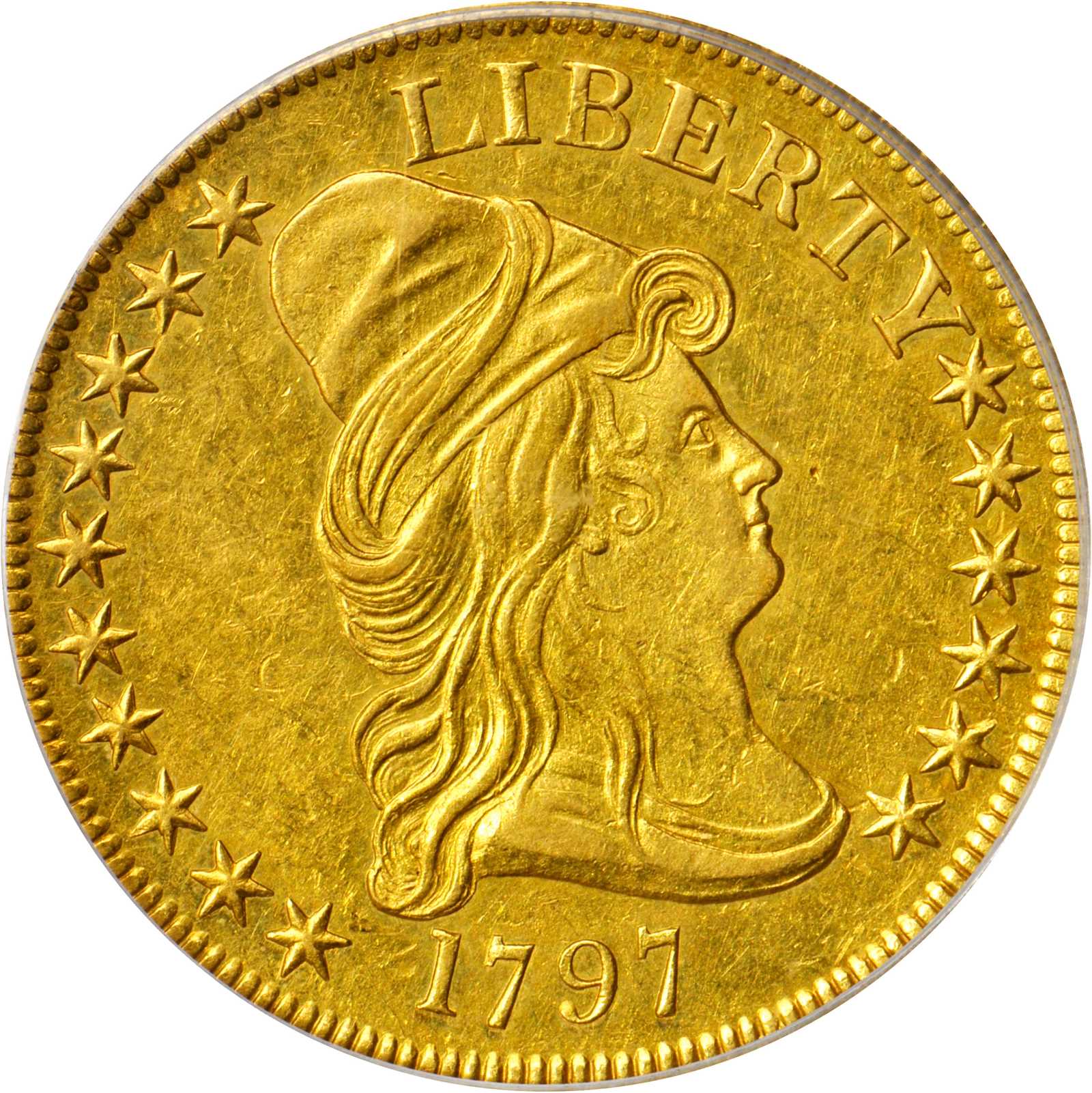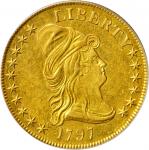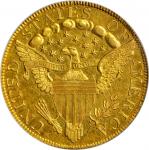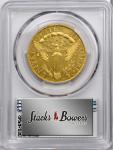1797 Capped Bust Right Eagle. Heraldic Eagle. BD-2, Taraszka-8. Rarity-4+. AU-58 (PCGS).Type and Style: Type II: Capped Bust Right, Heraldic Eagle. Style I: Head of 1795 with 16 stars arranged 10 left, six right; Reverse of 1797A with 13 stars in the field below the clouds and a long, thin neck on the eagle. The head punch is attributed to a hub prepared by Robert Scot, while the eagle punch is attributed by some to a hub prepared by John Smith Gardner.Die Variety: BD-2, Taraszka-8, Breen 2-B, HBCC-3177. Only one obverse die was used to strike all three die marriages of the 1797 Heraldic Eagle ten, and it is easily distinguished from the obverse die of the 1797 Small Eagle issue by the 10x6 star arrangement (as opposed to 12x4). The long, thin neck eagle is definitive for the reverse die of BD-2, Taraszka-8, which does not appear in any other die pairing in this series.Die State: BD Die State a/b. The obverse die state is particularly significant in that this coin does not display either of the two cracks through the digit 7 in the date that are present on virtually all known 1797 BD-2 eagles. In fact, Dannreuther states that this obverse die state: may exist, but currently the obverse is only known with the date crack. The reverse exhibits a tiny die rust lump on top of the second letter T in STATES. Although Dannreuther uses this lump to define Reverse Die State b of this variety, he states that it may be present for all states, thus this would be State a. The fact that the second 1797 BD-2 eagle in this collection lacks this die rust lump confirms that it is not present for all states (see below). In your catalogers opinion, the significant feature for determining the difference between Reverse Die State a and b of the 1797 BD-2 eagle is the presence or absence of a die crack from the border between the words STATES and OF to cloud 5 and, later, into the star field. Taraszka notes this crack as: Edge - field between S and O - cloud 5 - star 13. (None to Light) On the present coin this crack is present, yet faint and extends only to cloud 5, which in your catalogers opinion defines Reverse Die State b of this variety. Early to middle die state examples (i.e., pre-lapping) also display several tiny die rust lumps in the field between the words STATES and OF, as well as a sharp spike-like projection from the second dentil to the left of the letter O in OF. Estimated Mintage for the Issue: The mintage for the 1797 Heraldic Eagle provided in most numismatic references is 10,940 coins, based on Walter Breens assumption that production from the new Heraldic Eagle reverse dies began on June 7, 1797, with coins bearing that date continuing to be delivered through January 30, 1798. According to Mint records, 10,940 eagles were delivered during that period. Based on a more exhaustive study of die states and emission sequences, as well as modern estimates on the number of coins extant, Dannreuther provides a broader range of 8,750 to 12,500 coins struck for the 1797 Heraldic Eagle.Estimated Mintage for the Variety: Dannreuther estimates that 3,500 to 5,000 examples were coined from the 1797 BD-2 dies.Estimated Surviving Population for the Variety: Eighty to 100 coins are believed extant in all grades (per Dannreuther).Strike: Evenly and boldly struck on both sides; the reverse, as typically the case for this variety, is particularly sharp with crisp delineation throughout the eagles plumage.Surfaces: Handsomely original surfaces exhibit a blend of deep olive and straw gold patina, as well as subtle rose highlights around the peripheries. Overall texture is satiny, but there is some modest semi-reflectivity in the fields, especially on the reverse. Both sides are smooth with a tiny planchet pit in the obverse field before Libertys nose the only worthwhile provenance marker.Commentary: The Heraldic Eagle reverse design made its debut in the ten-dollar gold series with coins dated 1797. The work of Assistant Engraver John Smith Gardner, this design is based on the Great Seal of the United States. Its earliest use in the U.S. Mints gold series came in 1796 with the introduction of the quarter eagle. In addition to introducing this reverse design on ten-dollar gold eagles, the 1797 Heraldic Eagle issue is significant due to the final appearance of the 16-Star Obverse for this denomination. Beginning with the 1798-dated issue all eagles through the end of the Capped Bust Right series in 1804 would display 13 stars on the obverse, although the Mint did not standardize the arrangement of these stars until 1799. BD-2 vies with BD-4 as the most readily obtainable die marriage of the 1797 Heraldic Eagle ten. The present example, however, is a notable rarity due to the early obverse die state, unknown to Dannreuther, as related above. Mr. Taraszka clearly recognized the significance of this coins die state, and he acquired it as a companion piece to the late die state example offered below. The only Die State a/b 1797 BD-2 eagle that your cataloger has ever handled. This is an important bidding opportunity for early gold variety enthusiasts.From the Anthony J. Taraszka Collection. Earlier from our (Stacks) sale of June 2000, lot 1278, and pictured on the front cover of that auction catalog.

